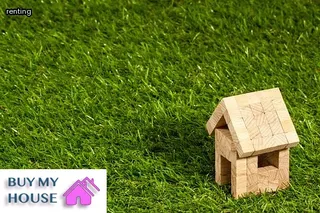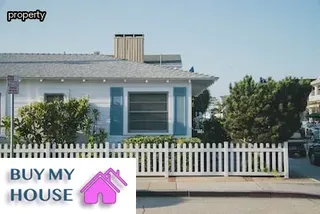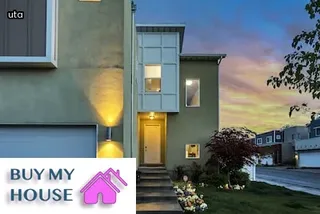When determining the rental value of your property in Utah, it is important to understand the tenant damage laws and how they can help protect your investment. By familiarizing yourself with local statutes, you can ensure that you are not overcharging for rent or risking financial loss due to tenant negligence.
It is also important to consider other factors such as market trends, location, and property condition when setting your rental price. Taking into account all of these elements will help you maximize your profits while still providing a quality living experience for your tenants.
Additionally, collecting a security deposit from tenants can provide added protection against potential damage caused by misuse or neglect of the premises. Finally, staying informed about tenant rights and landlord regulations in Utah will help ensure that both parties are legally protected throughout the rental period.

In Utah, it's important for landlords to understand their tenant damage responsibilities as well as the rental laws in place. Enhancing accessibility for tenants is critical to ensuring a smooth tenancy and protecting property owners from unwanted costs.
Landlords should provide clear information about any deposits or fees associated with the rental agreement, in addition to the rules and regulations governing occupancy. Tenants should be aware of the state's eviction process, security deposits, and other relevant matters.
Additionally, landlords should offer tenant-friendly payment solutions such as online payments or bank transfers. Understanding these elements can help both tenants and landlords ensure a safe and secure environment while managing potential damages to property.
Communication between landlord and tenant is essential in order to protect both parties from unwanted costs associated with tenant damage.
In Utah, landlords must provide tenants with the necessary disclosures about their property, including any existing damage. This is important for both parties, as it helps to protect the landlord’s rights and also makes sure that tenants understand what condition the property is in when they move in and take responsibility for any existing damage.
Landlords must also provide information about their security deposit policies and how they will use deposits to cover damages after a tenant moves out. Additionally, landlords must abide by all applicable state rental laws, such as those related to rent increases or late fees.
When it comes to understanding tenant damage in Utah, it is essential that both landlords and tenants are aware of these disclosure requirements and that they take the time to review the relevant information before signing a lease agreement.

In Utah, understanding tenant rights and responsibilities is essential for both landlords and tenants. Tenants have the right to live in a safe and clean home, as well as being able to make reasonable repairs and modifications to the property with the landlord's consent.
Landlords are responsible for maintaining a livable unit, including making necessary repairs, responding promptly to maintenance requests, and providing written notice before entering the rental unit. Tenants also have the responsibility of taking care of the rental property, notifying the landlord when repairs or maintenance is needed, paying rent on time, not damaging the premises beyond normal wear and tear, keeping common areas clean, abiding by all rules outlined in the lease agreement and respecting their neighbor's rights.
Additionally, it is important for landlords to understand their legal obligations under Utah law when it comes to tenant damage such as security deposits, eviction laws and return of personal property. It is also important that both parties understand how they can protect their interests if a dispute arises over tenant damage or other matters related to renting in Utah.
As a landlord in Utah, it is important to understand the laws governing rental agreements and your rights and responsibilities when it comes to tenant damage. In order to protect your property from unexpected or excessive damage, you need to be aware of the state's laws regarding tenant security deposits, inspection requirements, repair procedures, and other related issues.
Furthermore, understanding the legal ramifications of eviction can help landlords ensure that they are taking the necessary steps to minimize their risk in case of tenant damage. Additionally, having a well-drafted lease agreement that clearly outlines the landlord's expectations for how tenants use and care for their rental property can offer additional protection against potential damages caused by tenants.
Lastly, staying current on local ordinances and statutes that may affect your rights and responsibilities as a landlord can help guarantee that you are in compliance with all applicable laws when it comes to tenant damage. By familiarizing yourself with these issues and taking proactive measures to protect your interests as a landlord in Utah, you can avoid costly repairs or other losses due to tenant damage.

Understanding the basics of landlord-tenant law in Utah is a critical part of protecting your property from tenant damage. Knowing what to do if a tenant fails to pay rent or causes damage to your property can save you time and money when it comes to understanding your rights as a landlord.
The state of Utah has strict laws governing rental agreements and the rights of landlords, but there are also some protections for tenants that make it important for landlords to stay up-to-date on their obligations. It is essential that landlords understand the legal requirements for lease agreements, deposits, evictions, and dealing with tenant damage before signing any papers with a potential renter.
Additionally, understanding the remedies available when a tenant violates their agreement can help landlords protect their properties from further damages. Finally, staying informed about local ordinances in Utah can help landlords ensure they abide by all applicable laws while providing adequate housing for their tenants.
In Utah, landlords and tenants are both subject to landlord-tenant law. This law outlines the rights and responsibilities of both parties, as well as provides protection for the tenant from unfair practices.
There are specific rules governing issues such as security deposits, evictions, rent increases, repairs and maintenance, entry into the property, termination of tenancy and more. Landlords must provide certain disclosures to their tenants prior to entering a lease agreement, including a lead disclosure if the property was built before 1978.
They must also follow all applicable zoning ordinances when renting out their properties. Tenants have certain rights in regards to smoking or pets on the premises and must be given 30 days notice for any changes to the lease agreement.
Additionally, they cannot be charged late fees or other charges that have not been outlined in the lease agreement. Furthermore, they have the right to withhold rent if necessary repairs are not made within a reasonable time frame.

Salt Lake City property managers should be aware of the laws regarding tenant damage in Utah, as well as how to protect their properties. A landlord must understand the differences between normal wear and tear and tenant damage, as well as when they can legally hold tenants liable for the costs of any repairs.
Tenant damage is defined in Utah law as damages that are caused by a tenant’s misuse or neglect of the property that goes beyond ordinary wear and tear. The state requires landlords to provide tenants with notice if they plan to hold them financially responsible for any tenant damage.
Furthermore, landlords must also prove that any damage was actually caused by their tenants before initiating a legal battle over the issue. Property managers can take preventative steps to reduce their risk of dealing with tenant damage, such as having tenants sign an agreement about the condition of the property and outlining what type of damages are not allowed on the premises.
Additionally, establishing rules for repair requests and documenting all maintenance visits can help protect both landlords and tenants from disputes over whether certain damages were present when a tenant moved in or not.
Tenant damage is a tricky subject for landlords in Utah, as it can be difficult to identify what counts as damage done by the tenant and what is considered normal wear and tear. It is important for landlords to distinguish between the two so that they can ensure their property is protected and that they are not held liable for any damage caused by tenants.
Normal wear and tear involves gradual deterioration of a rental unit due to usage over time, while tenant damage is caused by intentional or negligent behavior on the part of the tenant. Common examples of tenant damage include broken windows, missing fixtures, holes in walls, and pet damages.
In order to protect their property from tenant damage, landlords should consider creating a detailed inventory list before leasing out the property so that they have an accurate record of its condition when tenants move in. Additionally, Utah rental laws also state that owners can charge tenants for any damages done beyond what could be expected from normal wear and tear.
It is important for landlords to review these laws carefully to ensure that they are properly protecting their investment against tenant damages.

Having a move-in checklist is a great way for landlords and tenants to protect their property in Utah. It serves as a record of the condition of the rental unit prior to the tenant moving in, which can be used to determine who is responsible if any damage occurs during the tenancy period.
This document can also help both parties identify any maintenance issues that need to be addressed before tenancy begins, such as broken appliances or water damage. Additionally, having a clear list of expectations and responsibilities can help avoid potential disagreements between landlord and tenant during the term of the lease agreement.
A move-in checklist is an important tool for protecting both parties’ interests when it comes to tenant damage in Utah rental properties.
When a tenant moves out of a rental unit, property owners should have a system in place that allows for an efficient move-out process. A checklist can help streamline this process and ensure that all necessary steps are taken to protect the property owner's rights.
It is important to understand Utah rental laws and how they apply to tenant damage before creating a checklist. It is also important to review existing documentation, such as the lease agreement, and carefully inspect the rental unit upon move-out.
Property owners should document any existing damage or violations of the lease agreement and take photos as evidence. Owners may want to consider preparing an inspection report prior to move-in so that they can easily compare it with the condition of the rental after move-out.
Additionally, any money owed by the tenant should be collected at the time of move-out in order to avoid potential legal disputes in the future. Establishing clear expectations with tenants and having a comprehensive checklist for move-outs will help protect property owners from unnecessary damages and ensure compliance with Utah laws.
In Utah, landlords have up to four years to sue their tenant for damages inflicted on their property. This statute of limitations is established by the Uniform Commercial Code, which outlines the legal rights and responsibilities of both parties in a rental agreement.
The landlord must take action within this four-year period in order to be eligible for reimbursement. Further, the landlord must present evidence of damages and prove that the tenant was negligent or otherwise responsible for causing them.
If the landlord fails to do so, then they may not receive compensation from the tenant. It is important for landlords to understand their rights under Utah law and how long they have to file a lawsuit in order to protect their property from tenant damage.

In Utah, landlords are legally allowed to charge tenants for damages to the rental property after they move out. The amount of time a landlord has to make such a charge varies based on the specific rental laws that apply in the state, but typically it is within 30-60 days after the tenant moves out.
It is important for both tenants and landlords to understand these laws so that they can protect their rights and interests. Tenants should be aware of any damage done prior to their move-out as this could be used by a landlord as grounds for charging them for repairs.
Landlords should also ensure that they have thoroughly inspected and documented the condition of their property before and after a tenant's stay, so that any charges made are valid and accurate. By understanding the applicable rental laws in Utah, both tenants and landlords can safeguard their respective interests when it comes to tenant damage.
Normal wear and tear on rental property in Utah is defined as deterioration that occurs over time with the use of the property, such as minor scratches or dents in walls, floors, or furniture.
Additionally, normal wear and tear includes fading from sunlight exposure, minor water damage from plumbing leaks, and carpet stains that occur from everyday living.
Landlords are responsible for all repairs related to normal wear and tear, including any necessary painting or carpet replacement due to excessive staining.
Tenants should still be aware of their responsibility to take reasonable care of the property while living there and are expected to pay for damages beyond what is considered normal wear and tear.
In Utah, tenants have the right to repair and deduct from their rent payment under certain circumstances. According to Utah State law, if a landlord fails to make necessary repairs and the tenant has to hire someone else to do them, they can deduct the cost of these repairs from their rent.
Tenants must provide written notice of their intention to repair and deduct before any work is done, as well as proof that the landlord was notified of the issue before hand. If the cost of repairs exceeds one month's rent, then tenants are not allowed to use this option.
Tenants also have the right to withhold rent until repairs are complete if they are considered essential for health or safety reasons. It is important for landlords in Utah to understand tenant rights when it comes to repair and deduct so they can take all necessary steps in protecting their property from damage due to tenant negligence.